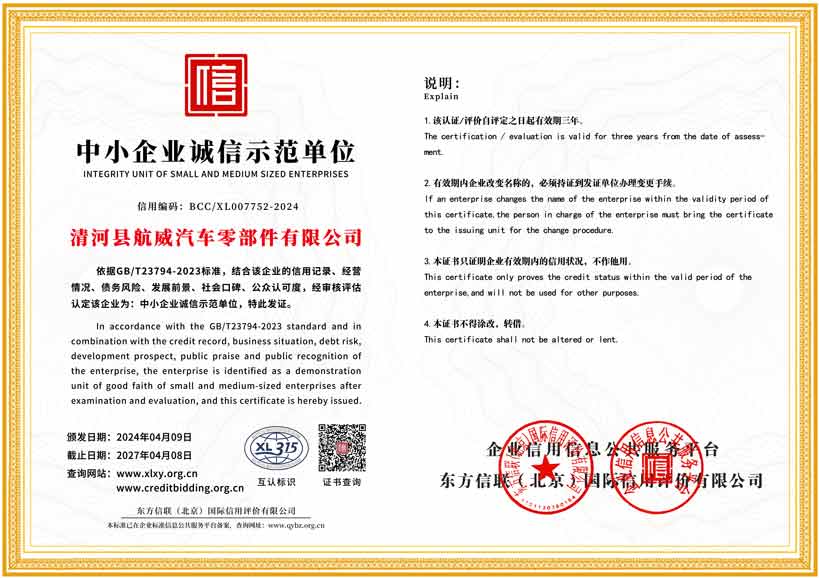Universal Handbrake Cable Options for Enhanced Performance and Reliability in Your Vehicle System
The Universal Handbrake Cable A Critical Component for Vehicle Safety
In the realm of automotive engineering, one often overlooks the significance of seemingly small components, such as the handbrake cable. Yet, the universal handbrake cable is a vital element that plays a crucial role in vehicle safety and performance. Understanding its function, importance, and maintenance can help car owners ensure their vehicles operate efficiently and safely.
The handbrake, or parking brake, serves the critical purpose of keeping a vehicle stationary when parked. Unlike the regular brake system, which works through hydraulic mechanisms to stop the vehicle in motion, the handbrake provides a manual way to secure the vehicle when it is at rest. The universal handbrake cable connects the handbrake lever to the brake mechanism on the rear wheels, allowing for this essential function.
Universal handbrake cables are designed to fit a wide variety of makes and models, providing a flexible solution for vehicle owners and mechanics alike. This adaptability means that replacement parts are often more accessible and cost-effective, as they can serve multiple vehicle types. However, while a universal fit might be convenient, it's essential to ensure the cable used meets the specific requirements and standards of your vehicle to prevent any functional discrepancies.
universal handbrake cable

The handbrake cable is typically constructed from durable materials capable of withstanding considerable tension and wear. Over time, however, even the best cables can suffer from corrosion, fraying, or stretching, leading to a decreased effectiveness of the handbrake system. A malfunctioning handbrake can pose serious safety risks; for instance, if a vehicle rolls unexpectedly while parked, the consequences can be disastrous. Therefore, regular inspection and maintenance of the handbrake cable are crucial. It is advisable to check for signs of wear and tear, such as unusual noises when engaging the brake or difficulty in pulling the handbrake lever.
Replacing a worn or damaged handbrake cable is essential for maintaining the vehicle's safety features. Fortunately, this replacement process is typically straightforward, often manageable for DIY enthusiasts with basic automotive knowledge. The first step involves lifting the vehicle securely and removing any necessary panels to access the handbrake assembly. After that, disconnecting the old cable and installing a new universal cable usually requires minimal tools, such as wrenches and pliers. Once the new cable is in place, it’s crucial to adjust the tension and ensure proper functionality before taking the vehicle back on the road.
In addition to replacement, proper usage of the handbrake is essential for longevity. Regularly engaging the handbrake when parked, especially on inclines, not only helps maintain its function but also reinforces its mechanism, preventing it from seizing or becoming stiff over time. Car owners should also avoid relying solely on the handbrake on steep grades; instead, it should be used in conjunction with the vehicle’s transmission to secure its position.
In conclusion, the universal handbrake cable may not be the most glamorous part of an automobile, but its importance cannot be overstated. This seemingly small component is integral to vehicle safety, providing peace of mind to drivers. By understanding its function, recognizing the signs of wear, and ensuring routine maintenance, vehicle owners can help guarantee the proper functioning of the handbrake system, ultimately enhancing their safety and that of others on the road. Therefore, taking the time to care for this critical component is an investment in both vehicle reliability and personal safety.
-
Upgrade Your Control with Premium Throttle CablesNewsAug.08,2025
-
Stay in Control with Premium Hand Brake CablesNewsAug.08,2025
-
Experience Unmatched Performance with Our Clutch HosesNewsAug.08,2025
-
Ensure Safety and Reliability with Premium Handbrake CablesNewsAug.08,2025
-
Enhance Your Vehicle with High-Performance Clutch LinesNewsAug.08,2025
-
Elevate Your Ride with Premium Gear CablesNewsAug.08,2025
